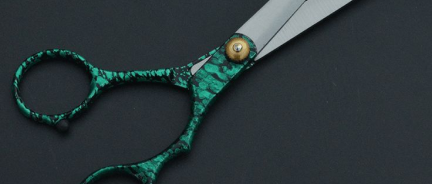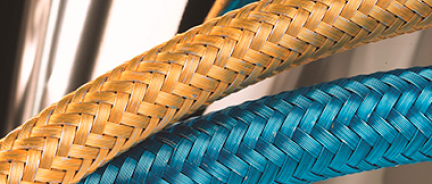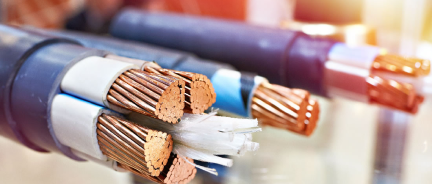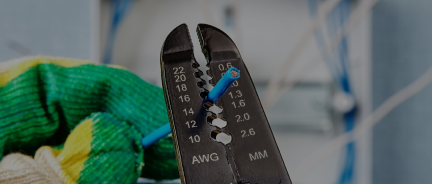Underground Wire Size Chart: Choosing the Right Cable for Distance and Load

Underground wire sizing is very different from indoor runs, as underground circuits tend to run much longer, which makes voltage drop a major concern. This applies to several circuits, including running circuits to garages and water gardening.
Since voltage drop is an issue, the solution is to upsize the wire for the distance and load. Proper sizing is a must to plan safe and efficient underground wiring. Below is everything you need to know about underground wire sizing.
Why Underground Wire Sizing Is Different
Underground installations face challenges different from indoor ones:
-
Longer Distances – Feeds to outbuildings exceed 100 feet, increasing resistance and voltage drop.
-
Soil Heat Retention – Underground wires don’t cool as efficiently as wires in open air, so their current-carrying capacity is lower.
-
Load Balance – Split-phase 120/240 V systems must consider whether the load is evenly shared between legs. Balanced 240 V loads mean that the wire can run longer, while worst-case 120 V loads usually cut distances in half.
-
Material Choice – Copper provides higher conductivity in smaller sizes, while aluminium is lighter and cheaper, making it practical for long feeder runs.
Underground Wire Size & Distance Chart (~3% Voltage Drop)
Voltage drop occurs when electrical current loses pressure as it travels through a wire, and long underground runs make this effect more noticeable. For example, a 120 V circuit feeding a detached garage 150 feet away with a 3% drop would deliver about 116.5 V instead of the full 120 V. While still within the recommended design limit, this small loss can impact sensitive electronics or motor loads, which is why keeping underground voltage drop at or below 3% is considered best practice.
The chart below shows the maximum distances for copper and aluminium conductors at common breaker ratings, based on a 3% voltage drop guideline.
Use this chart when planning underground branch circuits and feeders to match conductor size with breaker load and distance.
Note: While 3% is the recommended design limit for branch circuits, the NEC allows up to 5% total voltage drop for a combination of feeder and branch circuits. In practice, this means underground feeders may exceed 3% if overall performance is still acceptable, but keeping within 3% ensures equipment runs efficiently and safely—especially for sensitive electronics or motor loads. For branch circuits without a feeder, the NEC always requires a 3% drop.

How to Read the Chart
-
Copper vs. Aluminum Columns: Copper supports longer distances per gauge, while aluminium requires upsizing. Aluminum wire experiences higher resistance than copper, making copper a more convenient material for underground installations.
-
120 V vs. 240 V: A 240 V circuit can travel roughly twice as far as a 120 V circuit because current is split across two legs, reducing losses.
Split-Phase Balanced vs. Worst-Case
In a split-phase 120/240 V system, a balanced load uses both legs equally at 240 V. This halves the current on each conductor, which minimises voltage drop and allows much longer runs.
A worst-case scenario occurs when nearly all the load is on just one 120 V leg. In that case, the current flows entirely on a single conductor, and the voltage drop becomes much more severe. This can occur when most of the load is 120 V only, such as lights, outlets, or single-leg appliances, or when the loads are unevenly distributed between the two legs. Loads can be unevenly distributed between the two legs if the branch circuits in a subpanel aren’t balanced, meaning more 120 V breakers are placed on one leg than the other, or when real-world usage patterns cause one side to draw more current (e.g., multiple appliances running on the same leg at once). It is best to keep the load balanced at all times.
-
Example: #2 copper can reach 380 ft with a 240 V balanced load, but if the same amount of power is drawn entirely at 120 V, the safe distance drops to 190 ft—half the length—because current doubles on the single leg.
Types of Underground Cables
Choosing the right cable type is just as important as selecting the proper size. The insulation, jacket, and construction determine whether the conductor can be direct-buried in soil, pulled through conduit, or used in utility distribution. Below are the most common copper and aluminium options for underground use:
Copper Cables
THWN-2 / XHHW-2
-
These are single insulated conductors rated for wet locations. They are used in underground conduit runs.
-
Both have high temperature ratings (90°C wet or dry), which means they hold up under underground heat conditions where cooling is limited.
-
THWN-2 has a nylon jacket resistant to moisture and oil, while XHHW-2 uses cross-linked polyethene (XLPE) insulation, which provides extra toughness and abrasion resistance in conduit runs.
-
Both cables are commonly used for subpanel feeds, outdoor equipment, and service entrances where wires must be protected in conduit from soil or physical damage. THWN-2 is preferred for residential runs, while XHHW-2 is what you should pick for commercial use.
UF-B (Underground Feeder Cable)
-
A solid or stranded copper cable designed for direct burial without conduit.
-
Most common for direct burial in residential branch circuits.
-
Used to feed outdoor lighting, detached garages, sheds, or garden circuits.
-
While convenient, UF-B is limited in size (generally available up to 6 AWG) and is better for smaller loads and shorter runs. Its size range is perfectly fine for all short-run residential applications.
Aluminum Cables
URD (Underground Residential Distribution)
-
Primarily used by utilities to deliver power from transformers to service entrances. Homeowners can use them in residential applications to save costs on underground runs.
-
The cable is available in triplex and quadruplex variants. Triplex URD has two insulated phase conductors and is used for single-phase service drops or runs to smaller buildings. Quadruplex URD has three insulated phase conductors plus a neutral, and is used for three-phase secondary distribution.
-
URD is available for both direct burial or installation in ducts. It is used for long feeder runs to buildings, particularly when cost makes copper impractical.
-
Common applications include secondary distribution to houses, outbuildings, barns, or small commercial loads.
USE-2 (Underground Service Entrance)
-
A single-conductor aluminum cable with insulation designed for direct burial. It is sunlight and moisture-resistant.
-
USE-2 is used for service entrance conductors and feeders to outdoor equipment, especially when multiple single conductors are pulled together.
-
Unlike URD, USE-2 typically consists of individual conductors, not preassembled sets.
Practical Applications
Outbuildings and Garages
-
Long-distance feeds are common when powering detached structures. Aluminum URD is often chosen here because it balances cost and distance. A run of 150–300 feet may require large copper conductors, but aluminium URD provides a more economical option without sacrificing safety if upsized properly.
Wells and Pumps
-
Motor loads like well pumps are extremely sensitive to voltage drop. Even a slight undervoltage can cause a pump motor to overheat, trip breakers, or fail prematurely. For this reason, copper conductors are used because they are more reliable, especially if the pump is more than 100 feet from the service panel.
Subpanels
-
When feeding a subpanel in another building, a balanced 240 V load is ideal. For example, a workshop subpanel supplying both 120 V and 240 V circuits distributes the current evenly across both legs. This allows the run to extend much farther without needing oversized wire. THWN-2 or XHHW-2 copper and aluminum URD are common for subpanels.
Heavy Loads (HVAC, EV Chargers)
-
Equipment like air conditioners, heat pumps, and EV chargers draw large continuous loads. The feeders for heavy loads like HVAC units and EV chargers are often laid underground. These setups have larger conductors, not just for ampacity but also to minimise voltage drop. Oversizing the wire ensures the unit starts and runs correctly, especially for compressors or chargers sensitive to undervoltage.
Copper vs. Aluminum: Which Should You Choose?
-
Copper: Best for short runs, high-demand equipment, or where space in conduit is limited. Copper is the only option for small branch circuits, UF-B direct burial, and sensitive motor loads like pumps.
-
Aluminum: Best for cost savings on long feeder runs, provided the correct upsizing and termination practices are followed. Aluminium is a worse option for maintaining voltage drop, but it can be used if the cost is a concern.
Conclusion
Underground wiring demands more careful sizing than standard indoor circuits. The chart above provides a practical guide to balancing load, distance, and copper/aluminium.


















